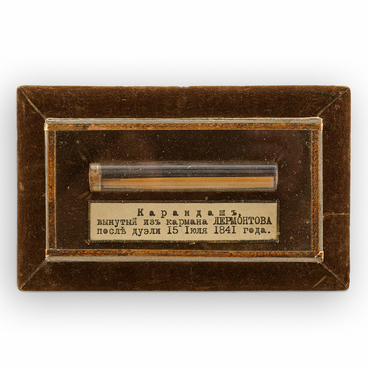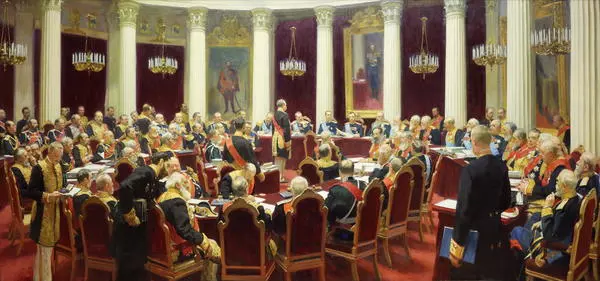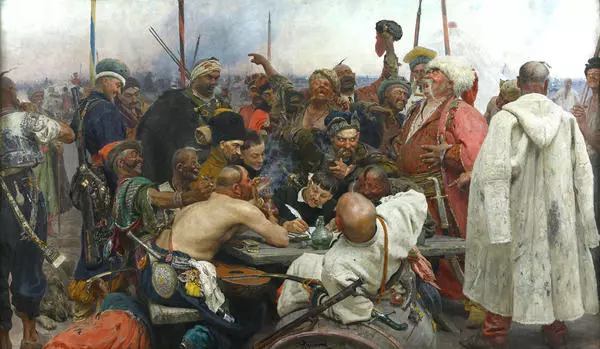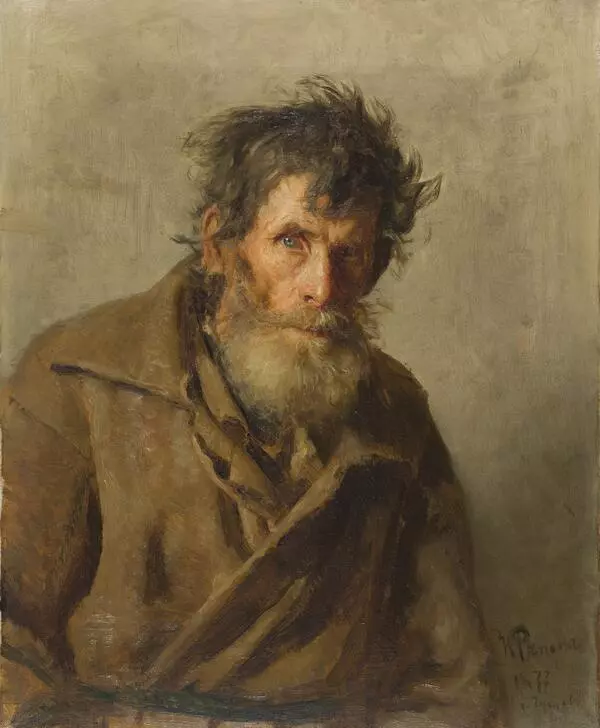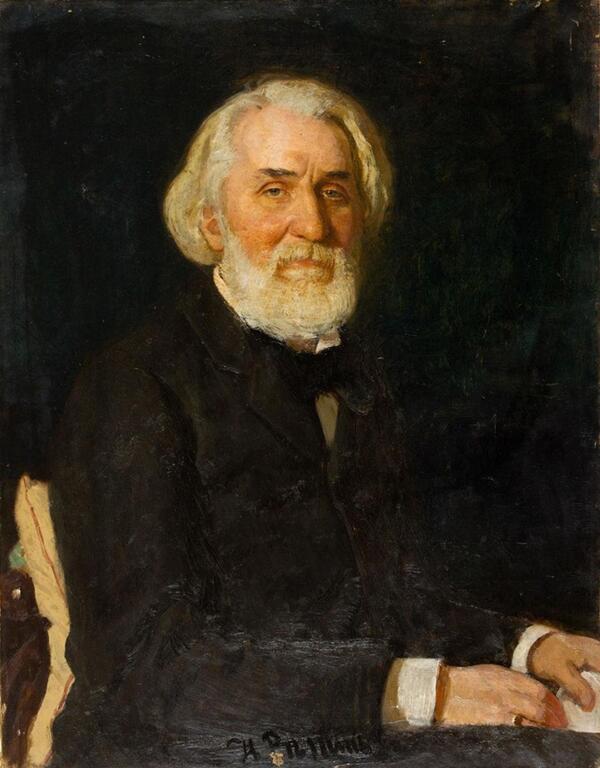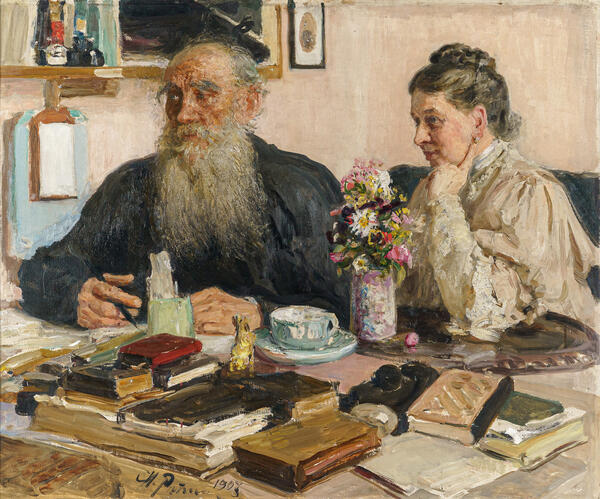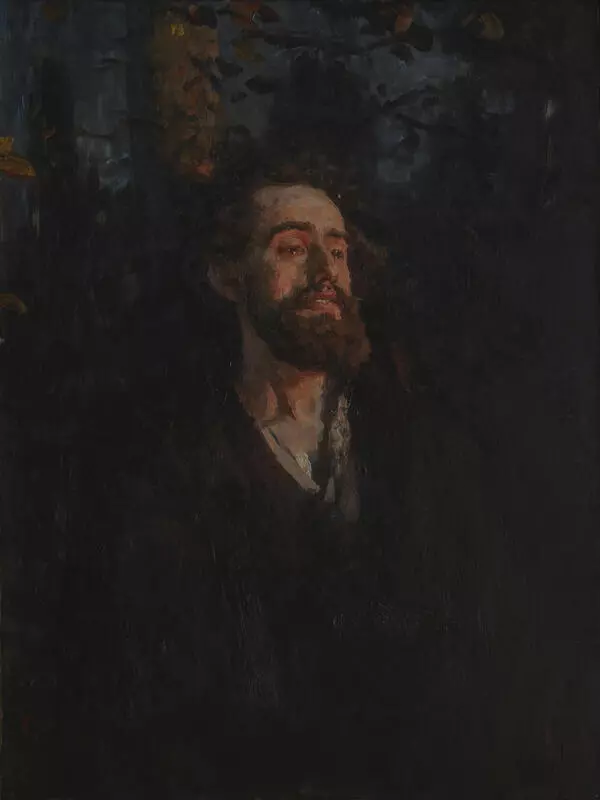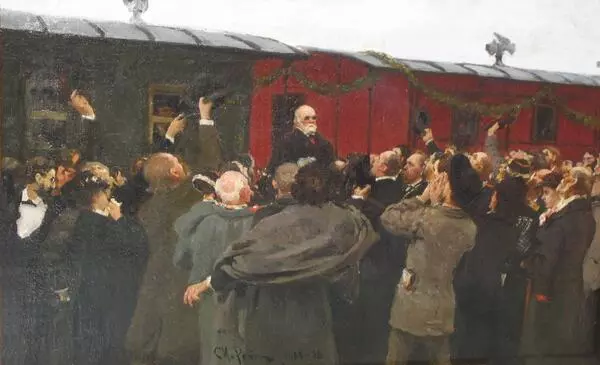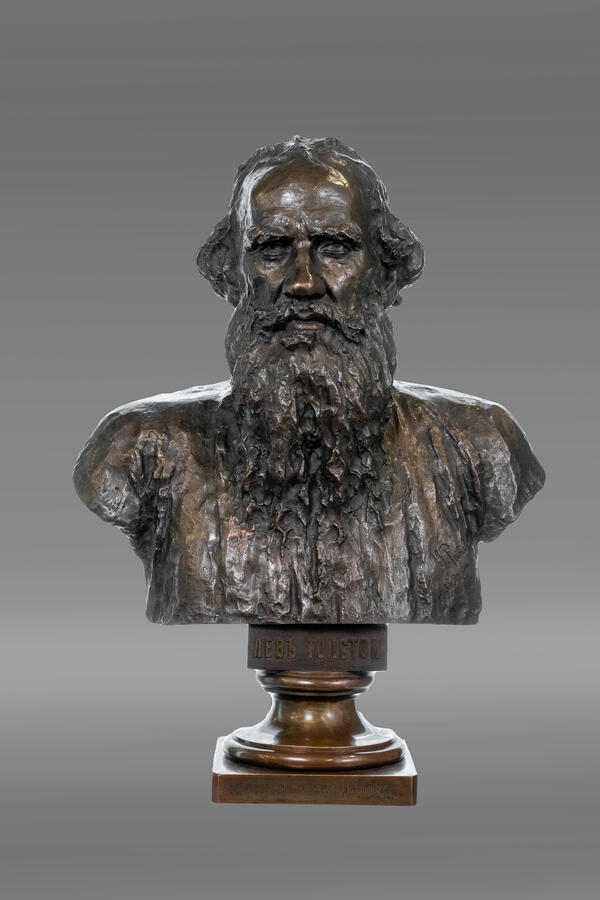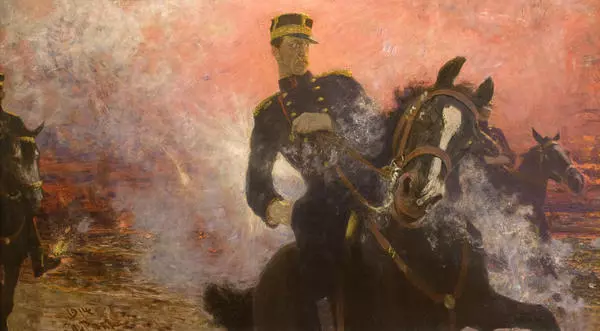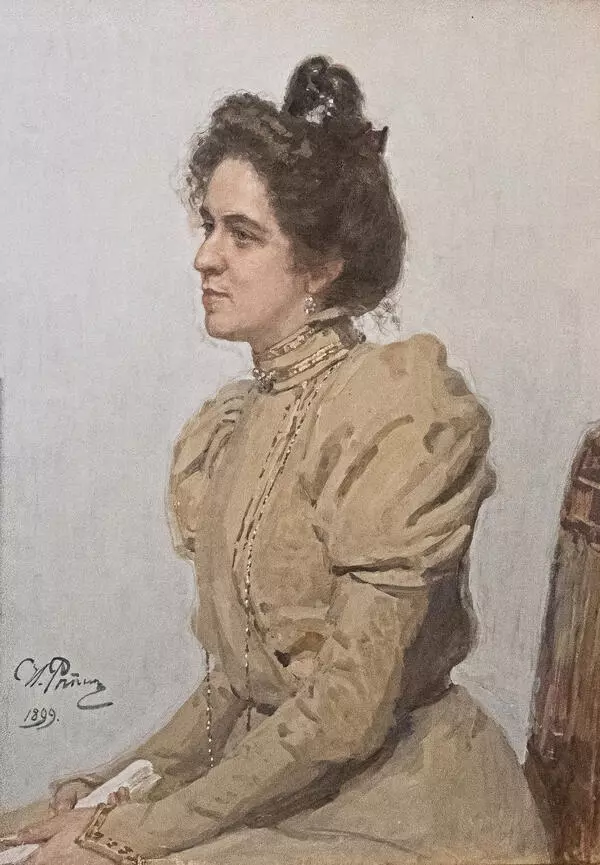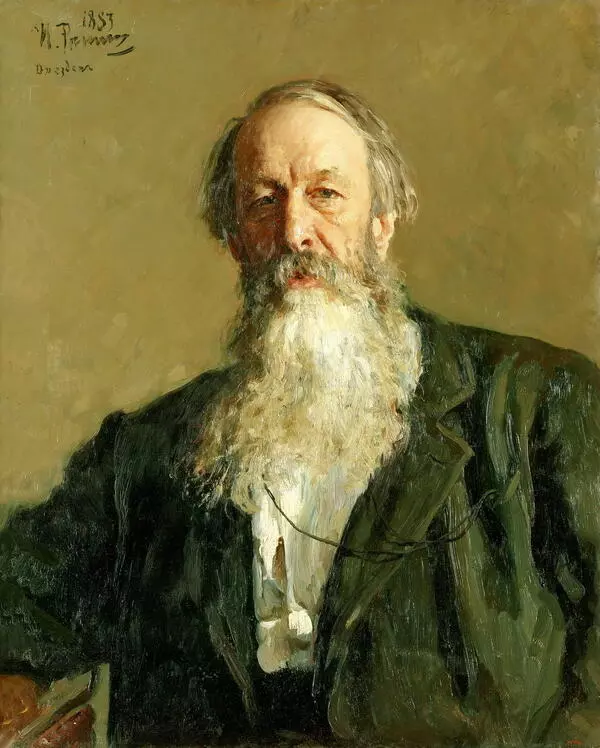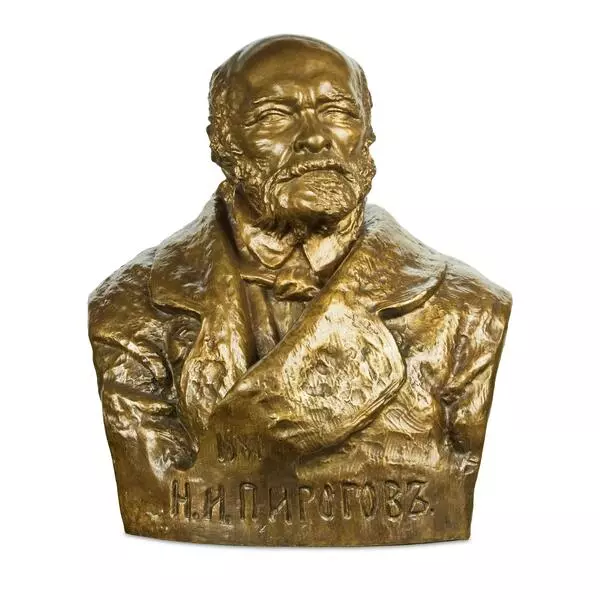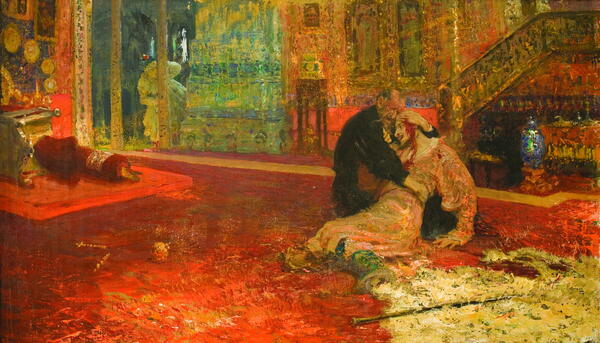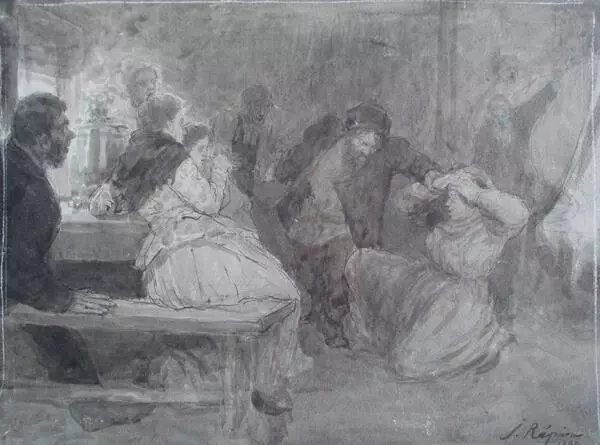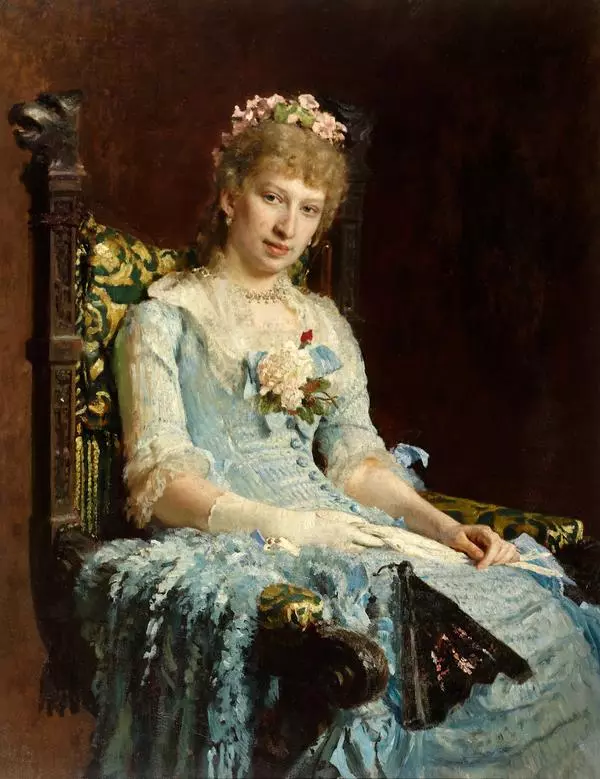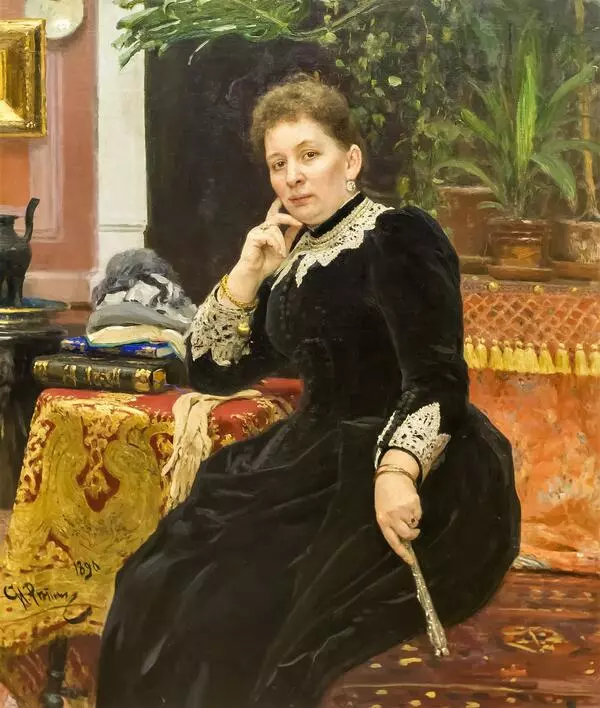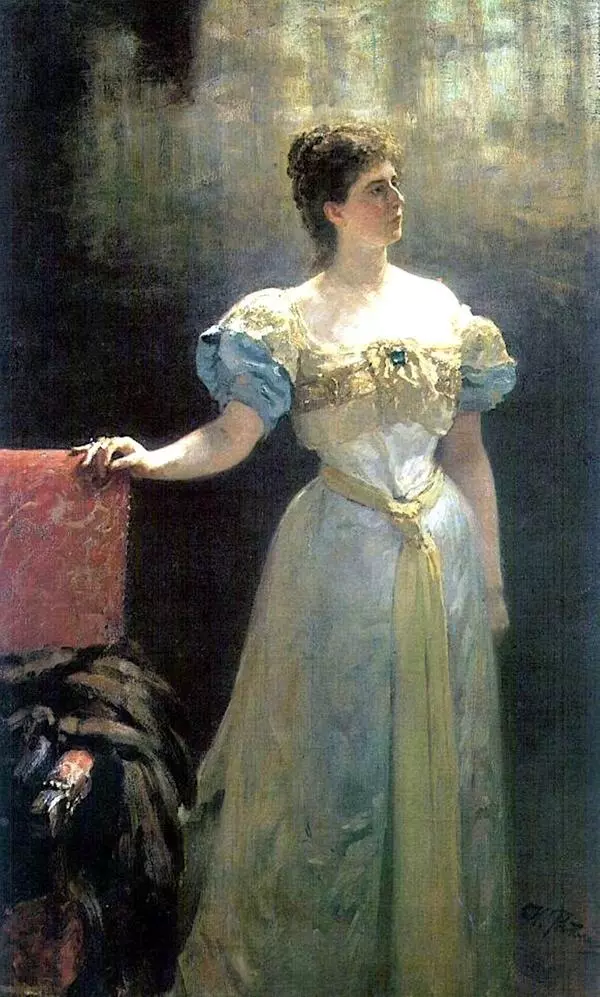The artist Ilya Efimovich Repin created an entire gallery of portraits of Lev Nikolayevich Tolstoy usually referred to in English as Leo Tolstoy, including paintings, graphic images and sculptures. Many of them are kept in the Literary Museum of the Pushkin House. They entered the collection in 1931 from the Tolstoy Museum that was closed. The friendship between the writer and the artist began developing in October 1880, when Tolstoy, who was interested in Repin’s work, himself came to his Moscow studio in Bolshoy Trubny Lane. From that time, the painter became a frequent guest at the Tolstoy House in Moscow and in Yasnaya Polyana.
In the summer of 1891, during another visit to Yasnaya Polyana, Repin painted a portrait of Tolstoy at work in the so-called room under the arches. This was the basement of the former storeroom in the Yasnaya Polyana house that was turned into an office by the writer himself in the 1860s. The ascetic ambiance of the “room under the arches” — simple whitewashed walls, modest furniture, tools (scythe, shovel, saw) hung on the walls and placed around the room — amazed the guests of Yasnaya Polyana. Tolstoy especially loved this room for the privacy and silence it offered, which were necessary for him when he was concentrating on his texts.
There, he worked on the epic novel “War and Peace” in the early 1860s, and in the 1880s and 1890s on the treatise “What Is to Be Done?”, the novel “Resurrection” and the drama “The Power of Darkness”. There, in the late 1880s, Leo Tolstoy wrote the novellas “The Kreutzer Sonata” and “The Devil”, dedicated to the theme of “the Christian principle of love, devoid of self-interest and rising above sensual love in the struggle with the flesh.”
The critic Vladimir Stasov, who admired the
painting, persuaded the collector Pavel Tretyakov to purchase the canvas for
his famous Tretyakov Gallery, as, according to Stasov, it represented “an image
from life of a great writer busy with his writing”. To the chagrin of the
critic, Tretyakov refused to purchase the painting. In 1892, it was acquired
from Repin by the politician and poet Mikhail Stakhovich, who bequeathed it to
the Tolstoy Museum.


